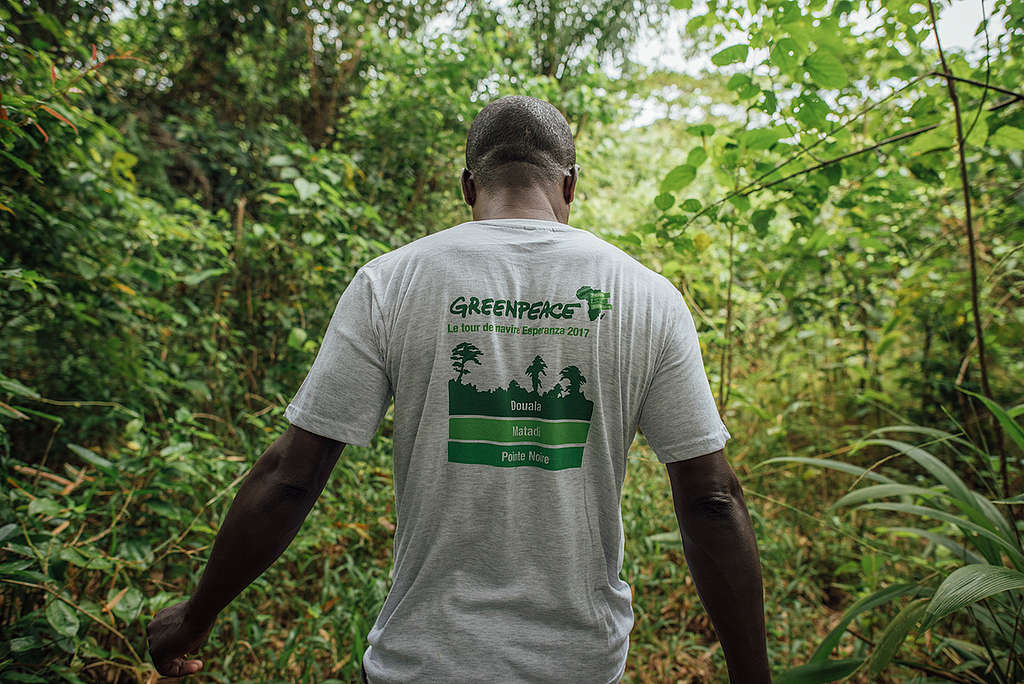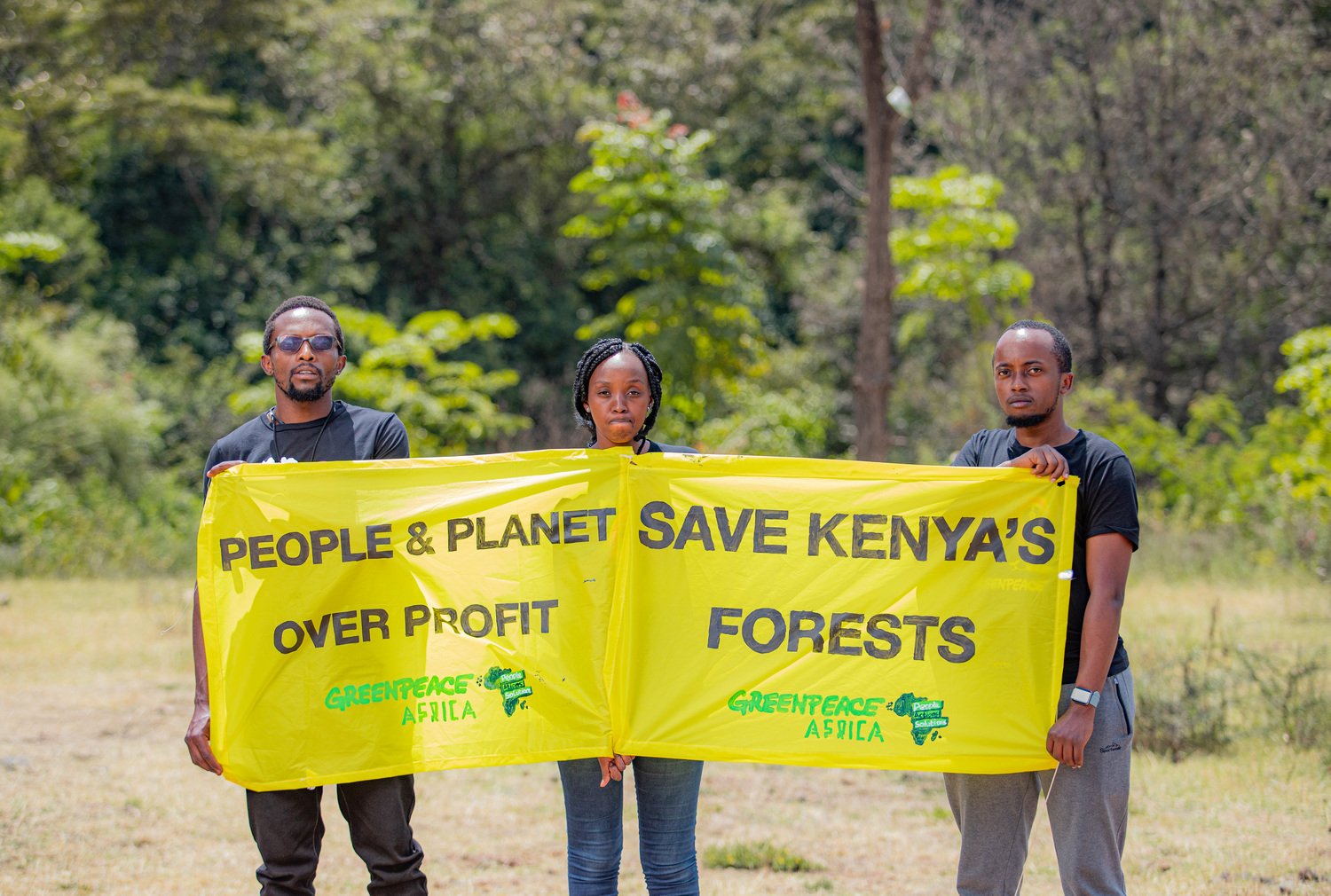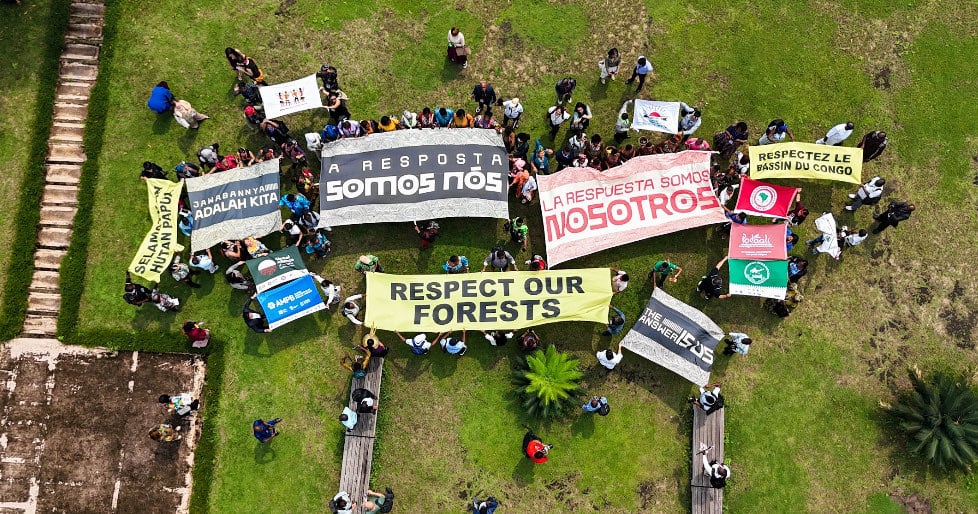As we write this article, the world is still dealing with the COVID19 pandemic. Since the crisis began, it had repeatedly been shown that a healthy and undisturbed nature, especially intact ecosystems such as forests and other wilderness areas, provides a shield against dangerous new diseases emerging and spreading to humans. When we exploit biodiversity hotspots, we increase our vulnerability to diseases from wildlife that are similar to COVID-19.
Some governments are doing that in the name of short-term economic gains, as they are facing the economic backlash of the COVID19 pandemic. Some low-income countries that are rich in forests are resorting to quick solutions like logging and industrial agriculture allegedly to fill the state coffers. In fact, industrial logging concessions and rubber and palm oil plantations are never the job-creating mechanism they promise to be. That has been demonstrated over and over again in forest countries around the world.
Companies, usually foreign-owned, are rapidly destroying rainforests that have existed for years. Local communities are left poorer after their traditional source of livelihood is desecrated. The only ones getting rich are a small group of beneficiaries that are close to the circles of power.
On May 22, the International Day of Biodiversity, it is important to recall the silent victims to this obsession for industrial exploitation of the forest. Biodiversity loss is a global crisis. In May last year, the Intergovernmental Science-Policy Platform on Biodiversity and Ecosystem Services (IPBES) warned that over 1,000,000 species are threatened with extinction worldwide. The details are grim: tropical rainforests are estimated to harbour more than half of the world’s plant and animal species. They are also essential for access to water, regulating temperature, and preventing soil erosion.
In our country, Cameroon, the conservation of biodiversity, global climate goals and human rights of Indigenous and local communities are all put at stake for industrial exploitation of the rainforest, driven by short-sighted thinking. Biodiversity hotspots are put at risk by industrial logging and agriculture, as trees are cut for the tropical timber market and entire forests cleared to make room for oil palm and rubber plantations. The government tries to assure conservationists that some space will be reserved for the wildlife in the forest it trashes, but even protected areas are not truly safe.
For example, the Dja Faunal Reserve, a UNESCO world heritage site in the South of Cameroon, is home to more than 100 species of mammals, including at least 14 primates, such as the endangered western lowland gorilla, chimpanzee, and white-collared mangabey, as well as species such as the endangered forest elephant, and the African grey parrot, bongo antelope and leopard.
The Dja Faunal Reserve is adjacent to the Sudcam rubber plantation, mainly owned by rubber giant Halcyon Agri. Sudcam has cleared more than 10,000 hectares of dense tropical rainforest in the South region of Cameroon – an equivalent of 10 football pitches a day – to make way for a rubber plantation between 2011 and 2018. The rubber plantation has rattled the lives of several indigenous communities, namely the Baka, but it has also aggravated the lives of those numerous protected species in the Dja Reserve.
To Indigenous and local forest dependent communities, the rainforest serves as a source of nutritious foods and traditional medicine, much of which science has yet to explore. The forest is also the foundation of their social life, from recreational to ritual practices. Furthermore, biodiversity loss itself is a direct and immediate threat to the livelihood of indigenous peoples like the Baka next to the Sudcam plantation.
Upon the arrival of rubber company Sudcam, the Indigenous community has lost access to its forest and specifically to the animals and plants they rely on. As Sudcam is getting richer, it leaves entire communities in impoverishment, abjectness and destitution.
That is the fate which the chiefs of the Banen people of the Littoral region in Cameroon are trying to avoid in their current struggle against the destruction of large parts of the Ebo forest.
The Ebo Forest is a biodiversity hotspot, one of the intact forest ecosystems in the Gulf of Guinea, stretching over 2000 km2. Ebo Forest is home to an amazing range of wildlife, including forest elephants, gorillas, drills, chimpanzees, grey parrots and the goliath frog – the largest living frog on the planet. Accordingly, it was designated over a decade ago by the Cameroon Government as a National Park. However, on the 4th of February, the same government of Cameroon authorized two logging concessions (UFA07005 and UFA07006) inside the area of Ebo Forest. The planned concessions are enormous – about the size of London. Again, the government of Cameroon wants to convince us that conservation can be done with chainsaws.
Biodiversity loss doesn’t only mean our children would get to see some of the world’s most marvelous creatures only in documentary films. The consequences are far greater and more tangible. The extinction of forest elephants, for example, small relatives of African Savanna elephants, might also reduce the number of large trees that they support, trees that excel at storing carbon. In the Congo Basin forest, the disappearance of forest elephants might mean, according to research published this year in the journal Nature Geoscience, a loss of about three billion tons of carbon – equivalent to France’s CO2 emissions over more than 25 years.
Cameroon’s government has made public commitments to preserve and protect biodiversity. Positive declarations and ambitious plans may win applause and some international funding, but all eyes should be on implementation. Field investigations by Greenpeace Africa and others clearly show how far we are from protecting biodiversity.
In Cameroon’s government, as well as in the meeting rooms and corridors of development agencies, decision makers often hold outdated views. Too often we hear that only through rapid and massive removal of the rainforest in favor of large-scale logging and industrial agriculture plantations can the country emerge out of poverty.
Yet that model has repeatedly failed the people, as short-term high profits always remained accessible only to a small circle of beneficiaries. On the contrary: local communities who have lived in harmony with nature for many generations, are likely to face poverty, abuse, hunger and alcoholism wherever forests are suddenly destroyed.
The abjectness of the Baka people and the pressures put on the wildlife in the Dja Faunal Reserve, after massive forest clearing to make room for Sudcam’s rubber plantation, should worry anyone who cares for human rights and biodiversity. Just like the Banen people around the Ebo Forest, communities all across Cameroon have become well aware of the negative precedents and false promises of “growth” and “development” through the trashing of forests.
“We were told the same thing forty years ago when the rubber tree production company (Hevecam) and the oil palm production company (Socapalm) were set up. But we have remained poor and I must even say that we are getting poorer” – this is how His Majesty Ebande Charles, chief of Adjap village in the South of Cameroon has reacted to the promise of new jobs being created by a new scandalous palm oil plantation, currently planned under the name of Camvert. It is becoming increasingly clear that the best solution for both human rights and the planet is for forests to be managed by local communities. They do so much better than the industrial loggers or plantation owners.
The Cameroonian government needs to realize that the rapid and intensive exploitation of nature has more far-reaching consequences than the GDP chart for the coming year or two. A low income country like ours would simply have to do better than simply trashing forests to make the economy grow.
Top-down conservation plans and granting World Heritage status for strategic sites won’t be enough. To prevent the extinction of fauna and flora species, Indigenous communities that live among them need the rights to manage their forest. Standing for biodiversity means communities should get the rights to manage their forests, instead of the corporations that destroy them.
There are so many other investments that can be made for genuine development that doesn’t destroy communities and the planet’s biodiversity. Ecological agriculture, eco-tourism and investments in renewable energy are just some of the ways to do that.
Lamfu Fabrice Yengong is a Congo Basin Researcher and Sylvie Djacbou Deugoue is a Forest Campaigner for Greenpeace Africa
Links to be included – for the editor’s consideration
Photos to include from Ebo Forest (credit: San Diego Zoo Global): available here
Letter by 60 scientists and other experts to Cameroon’s Prime Minister: available here
Messages from Leonardo DiCaprio: Twitter, Instagram
Biodiversity loss illustration in the Sudcam concession / credit: Greenpeace Africa
Disappearance of Trichonympha acuminata Engl / credit: Greenpeace Africa





Discussion
Leave the forests alone.
👍